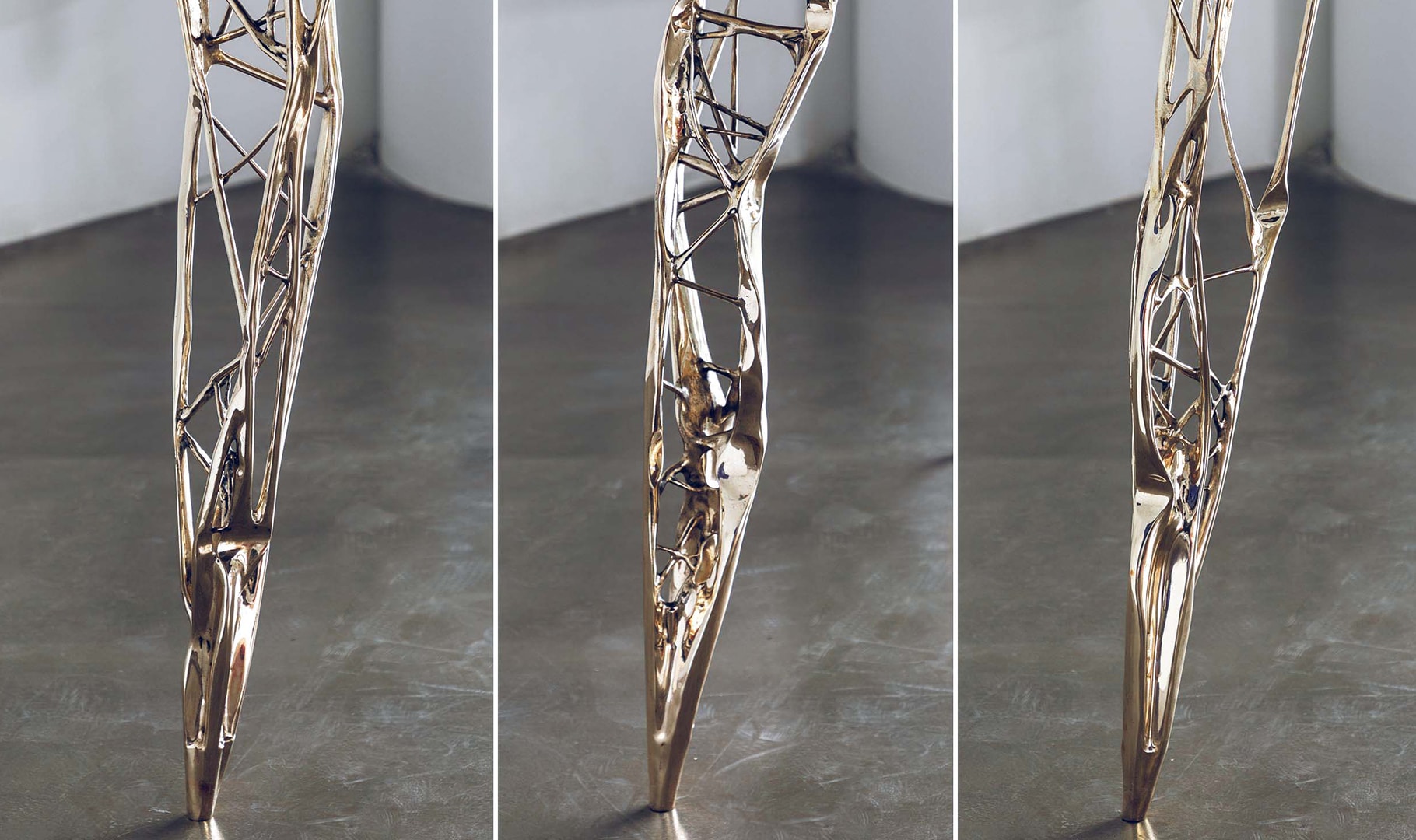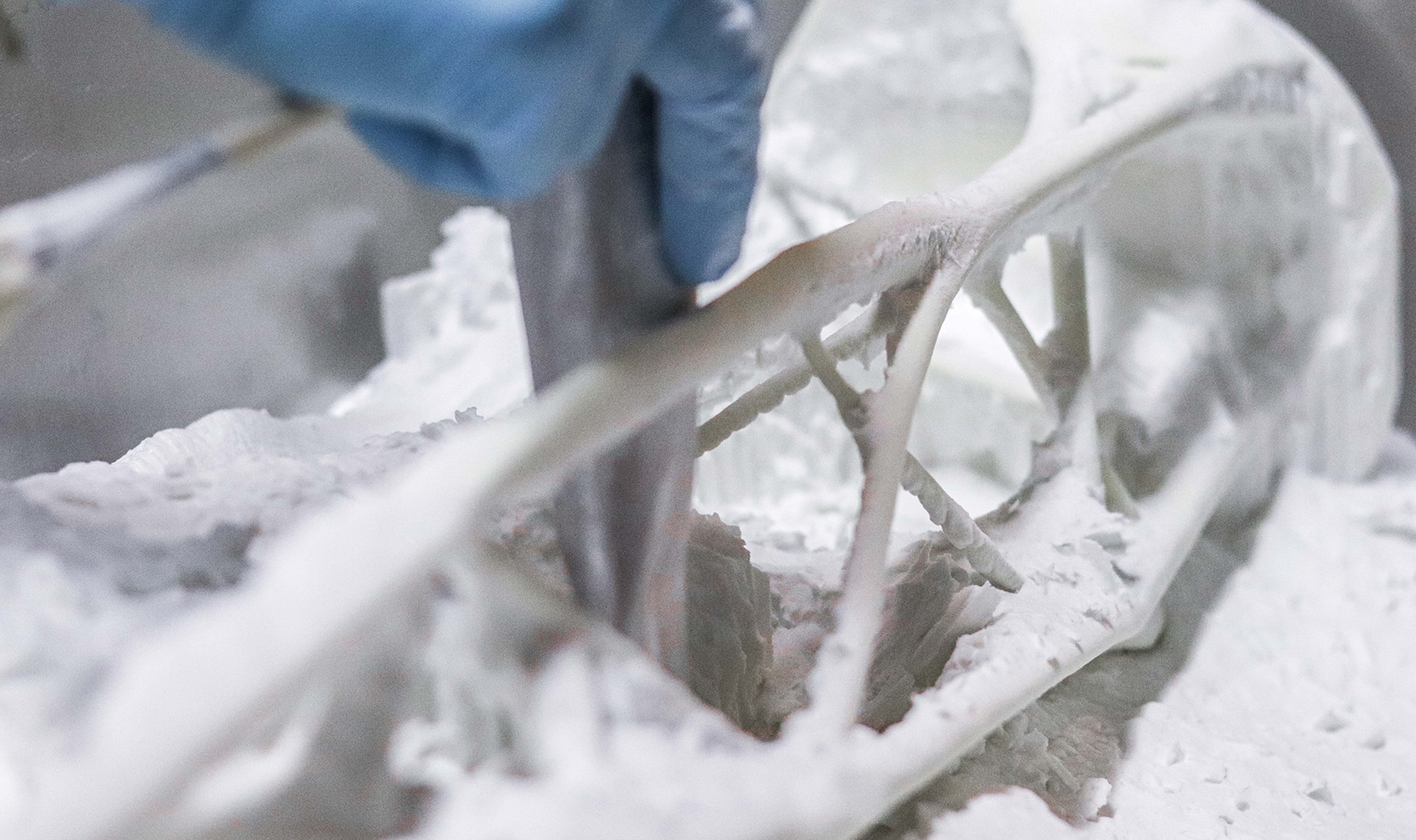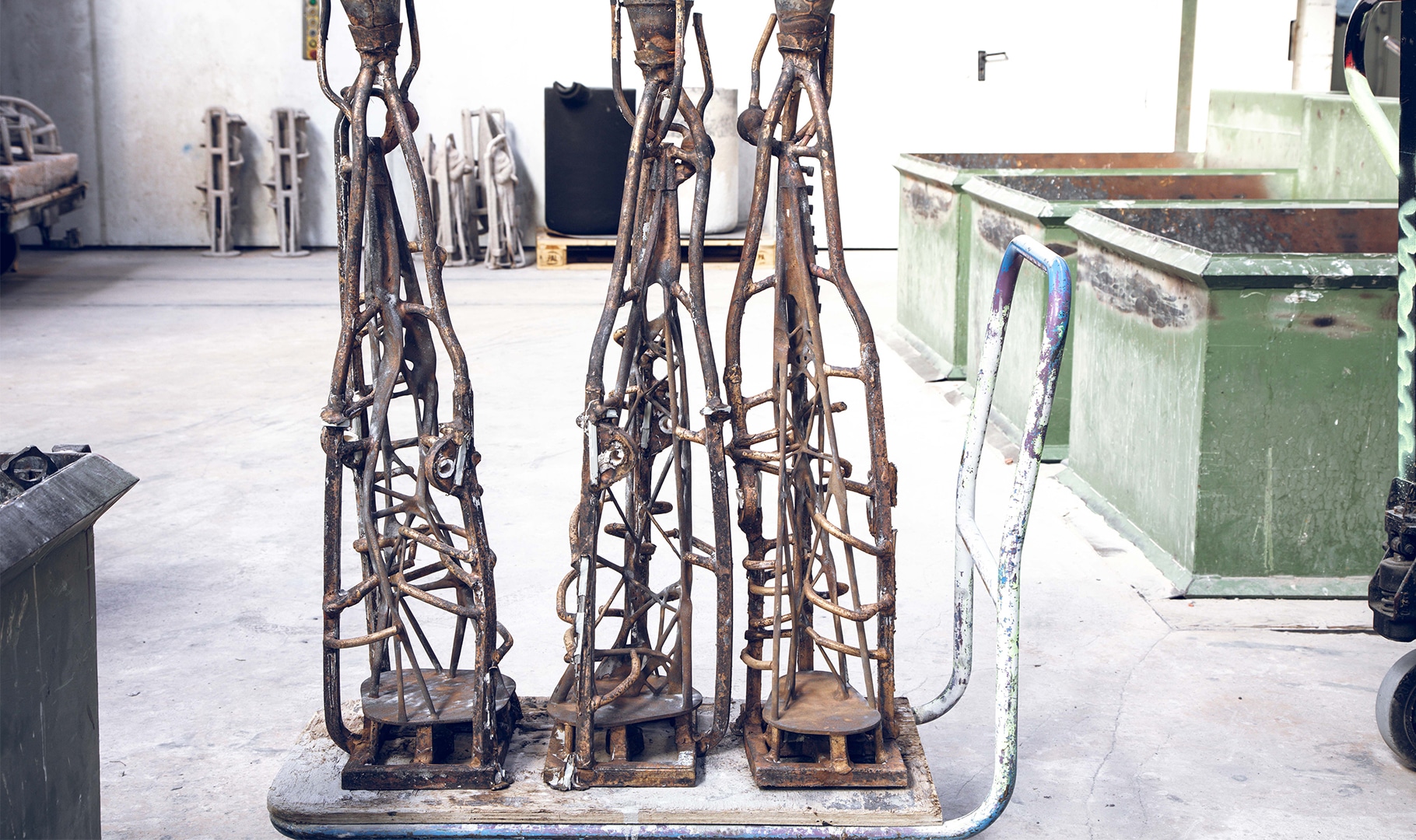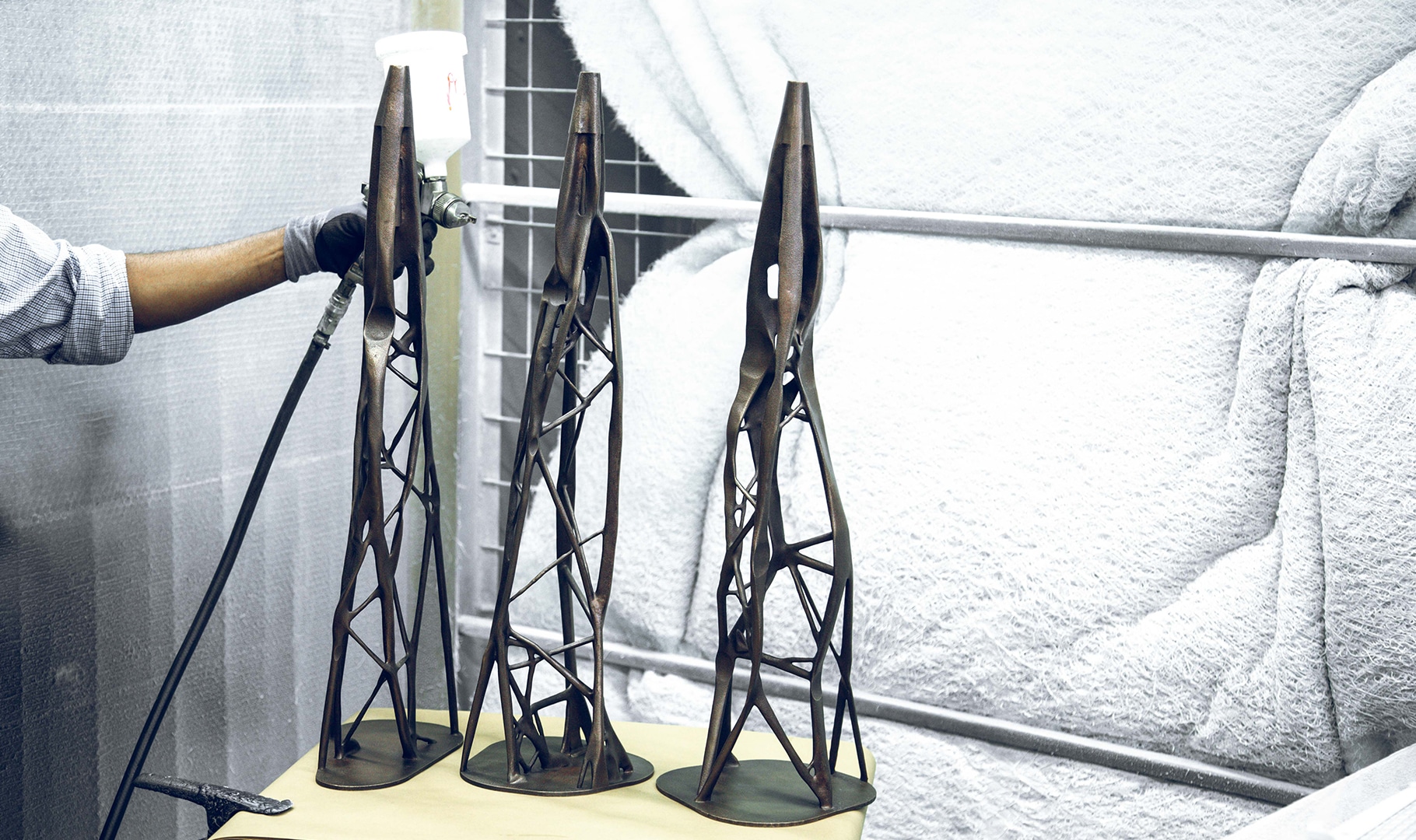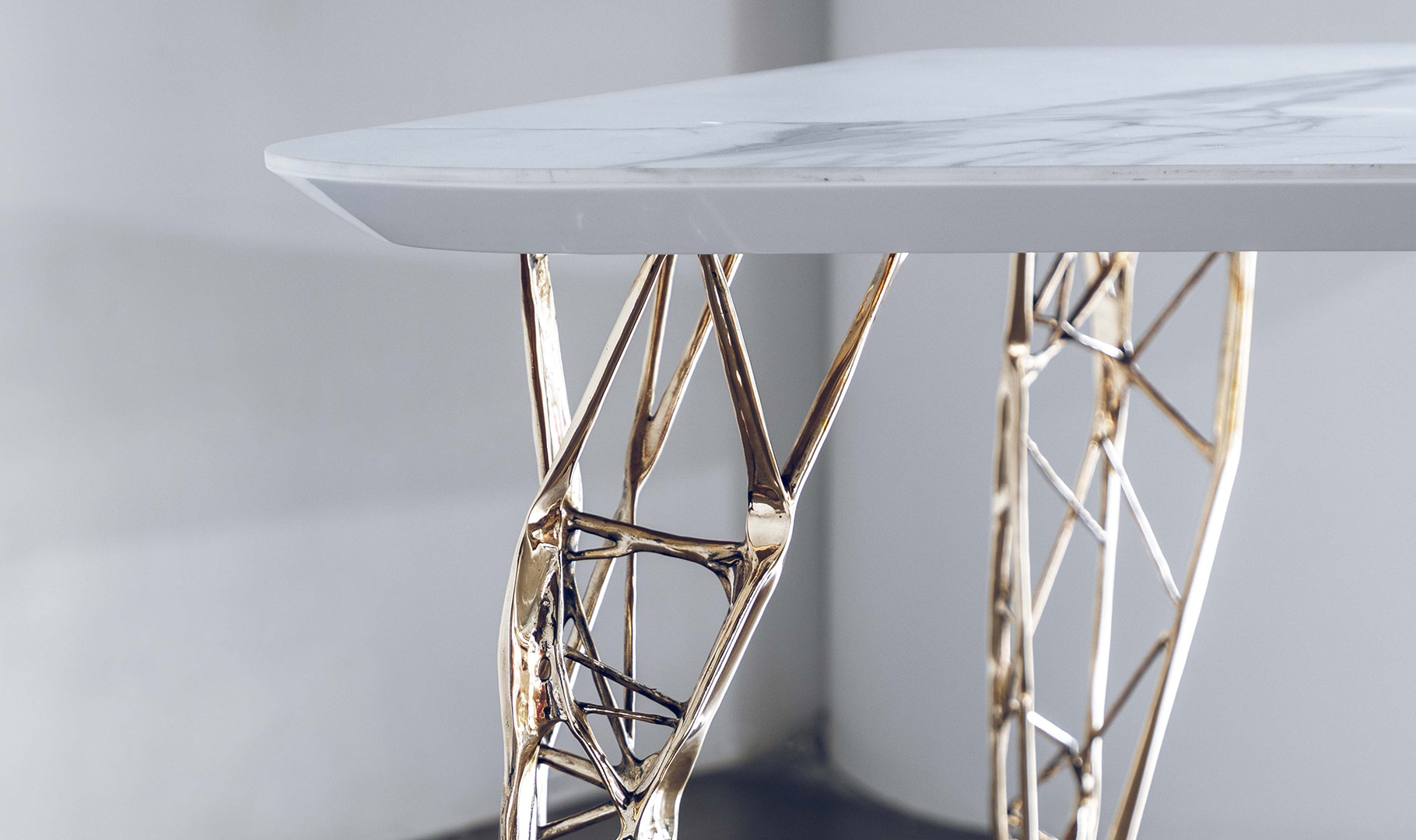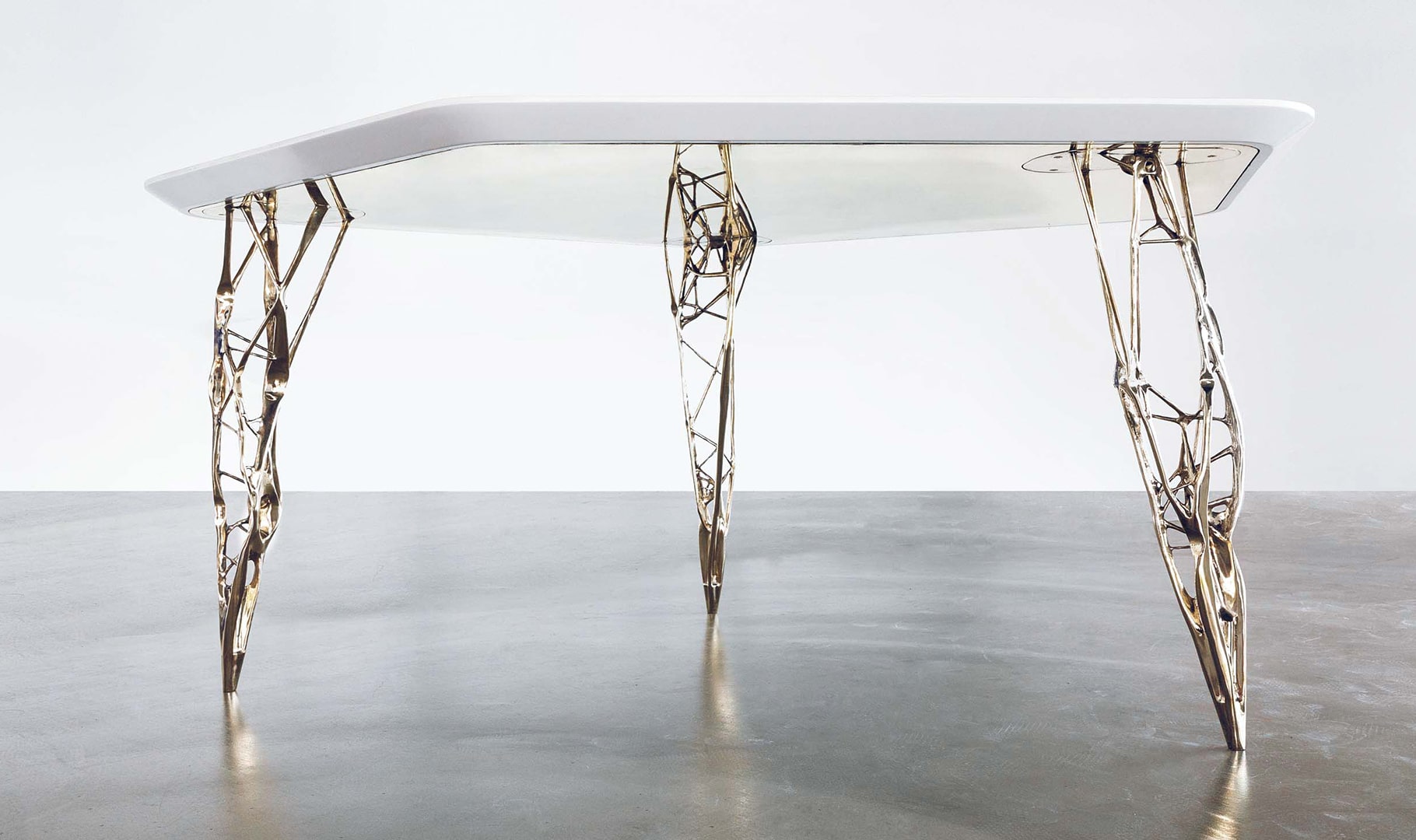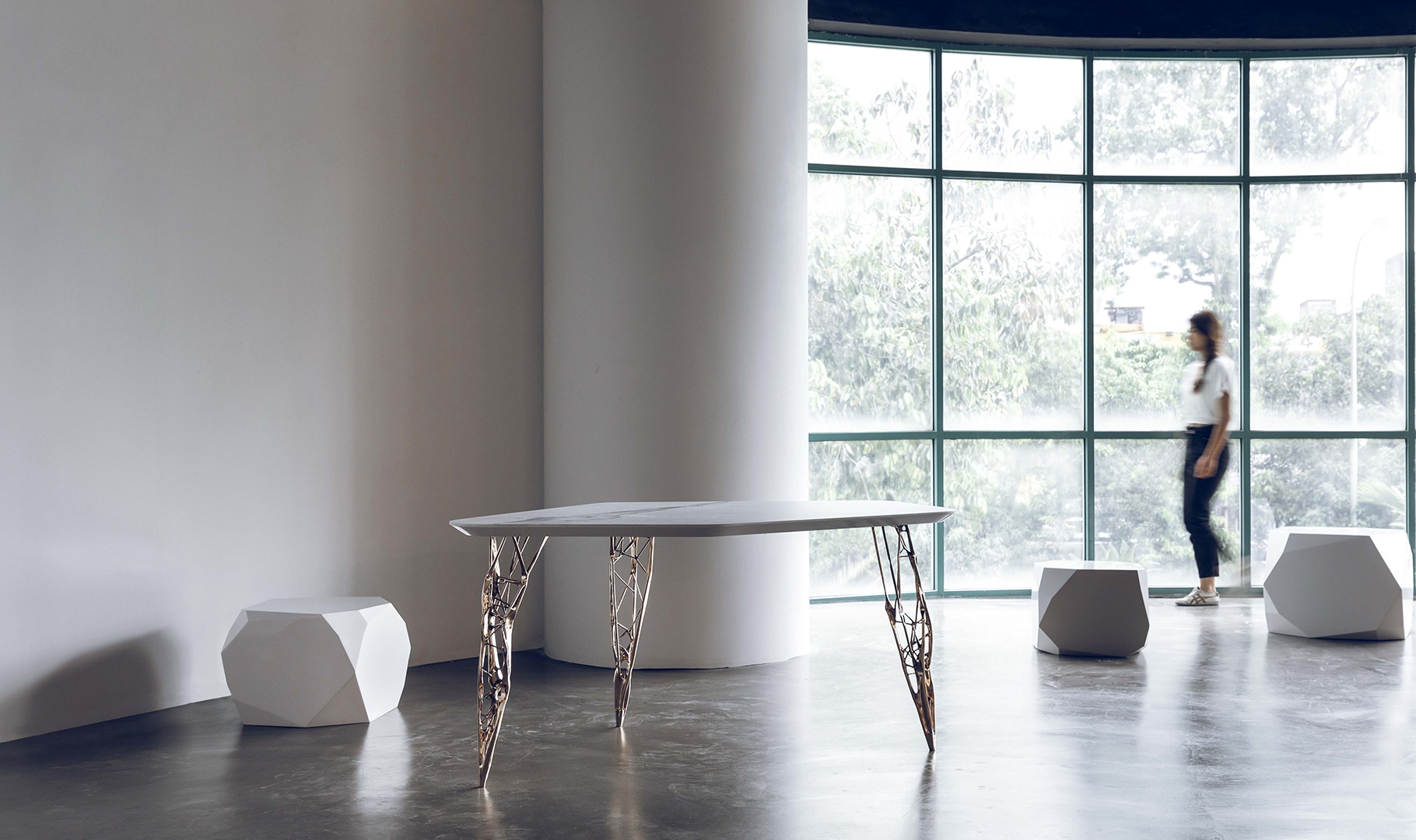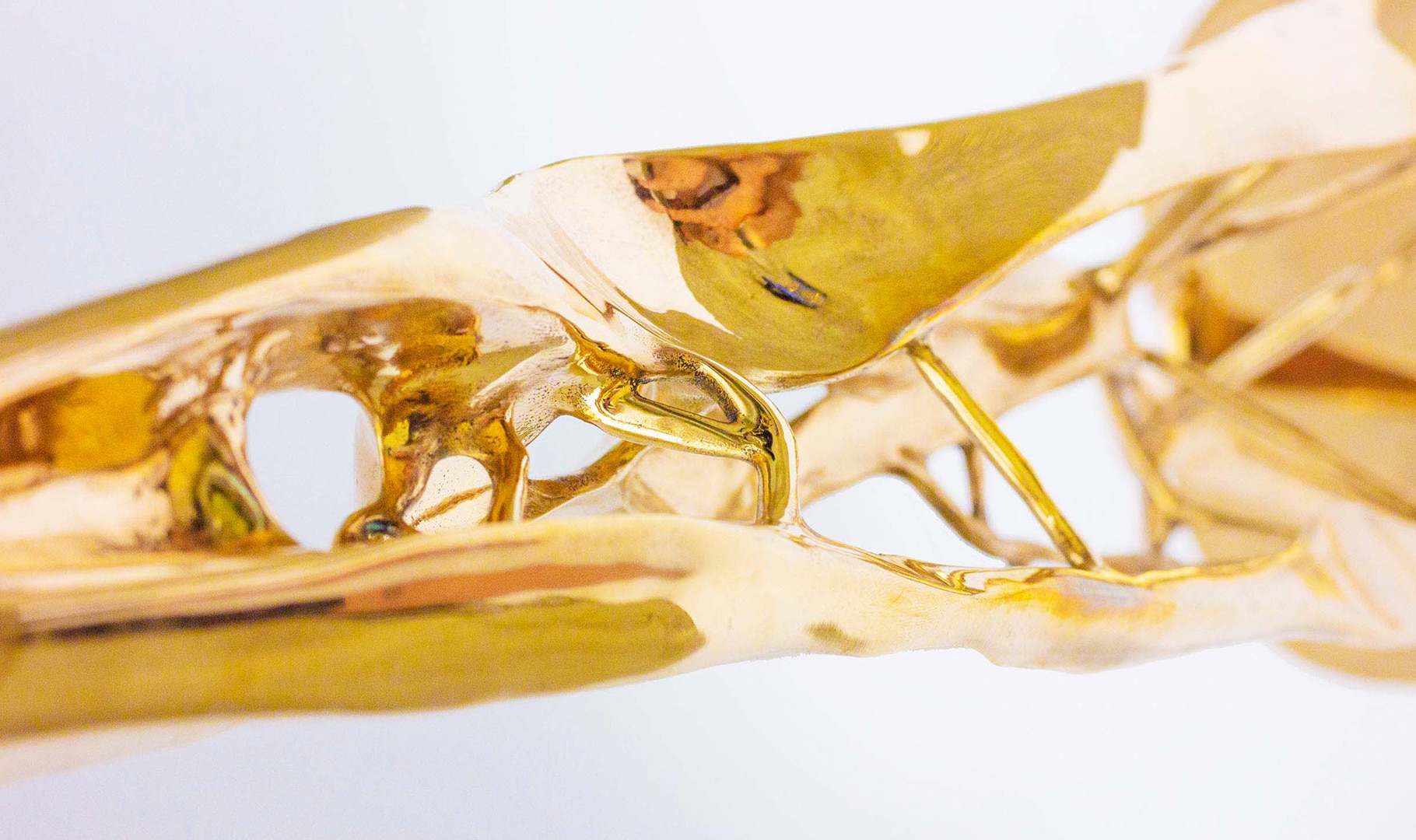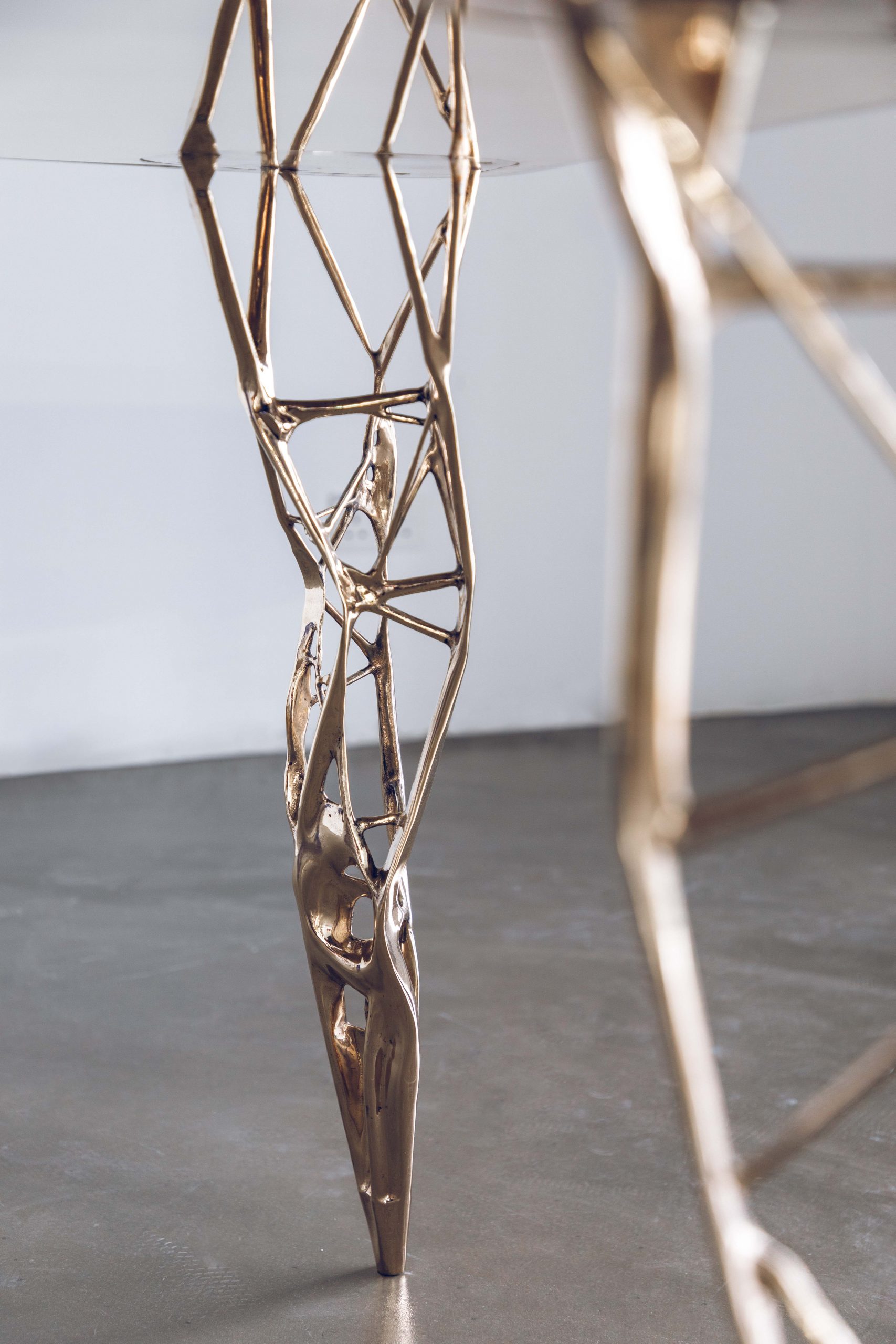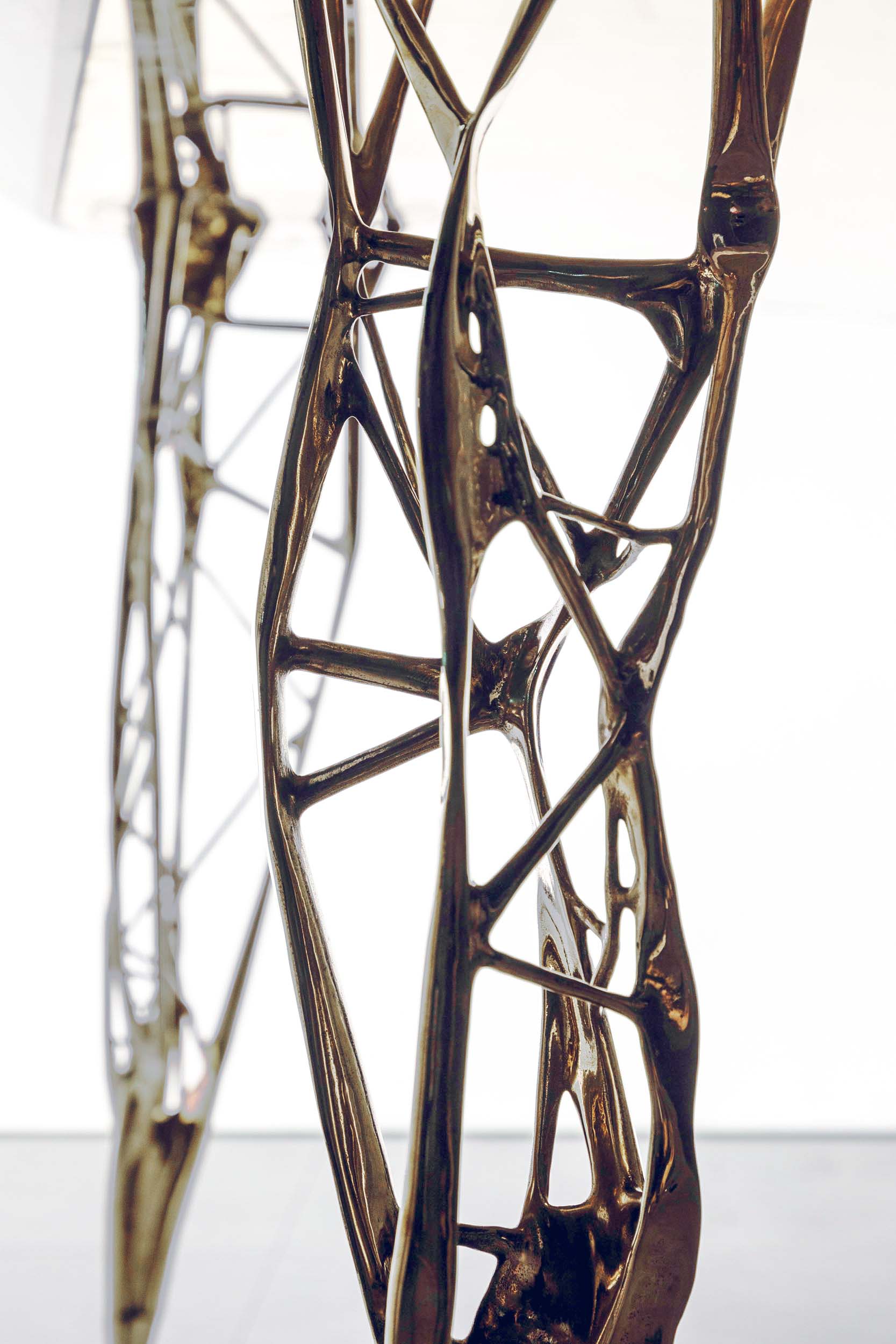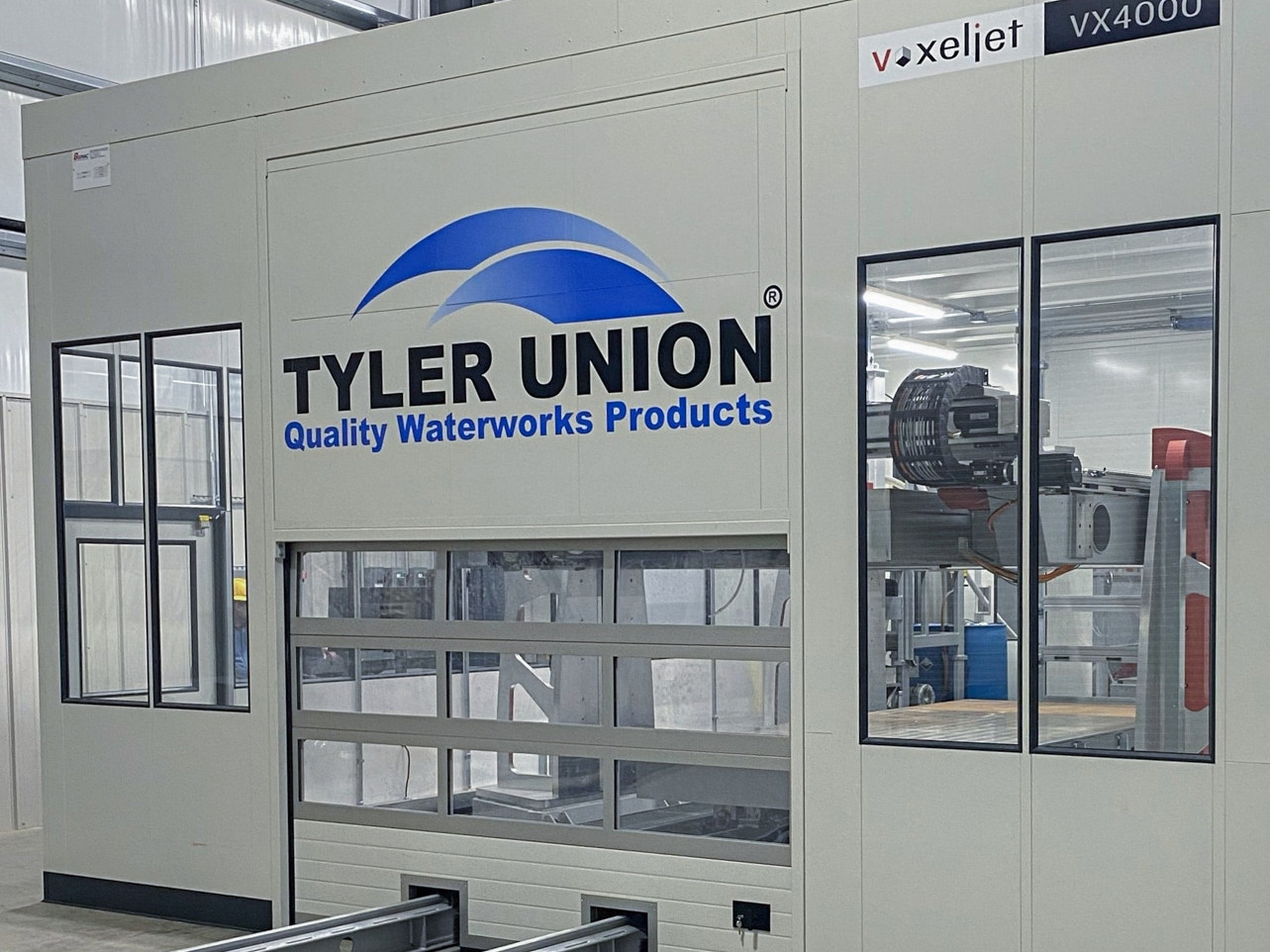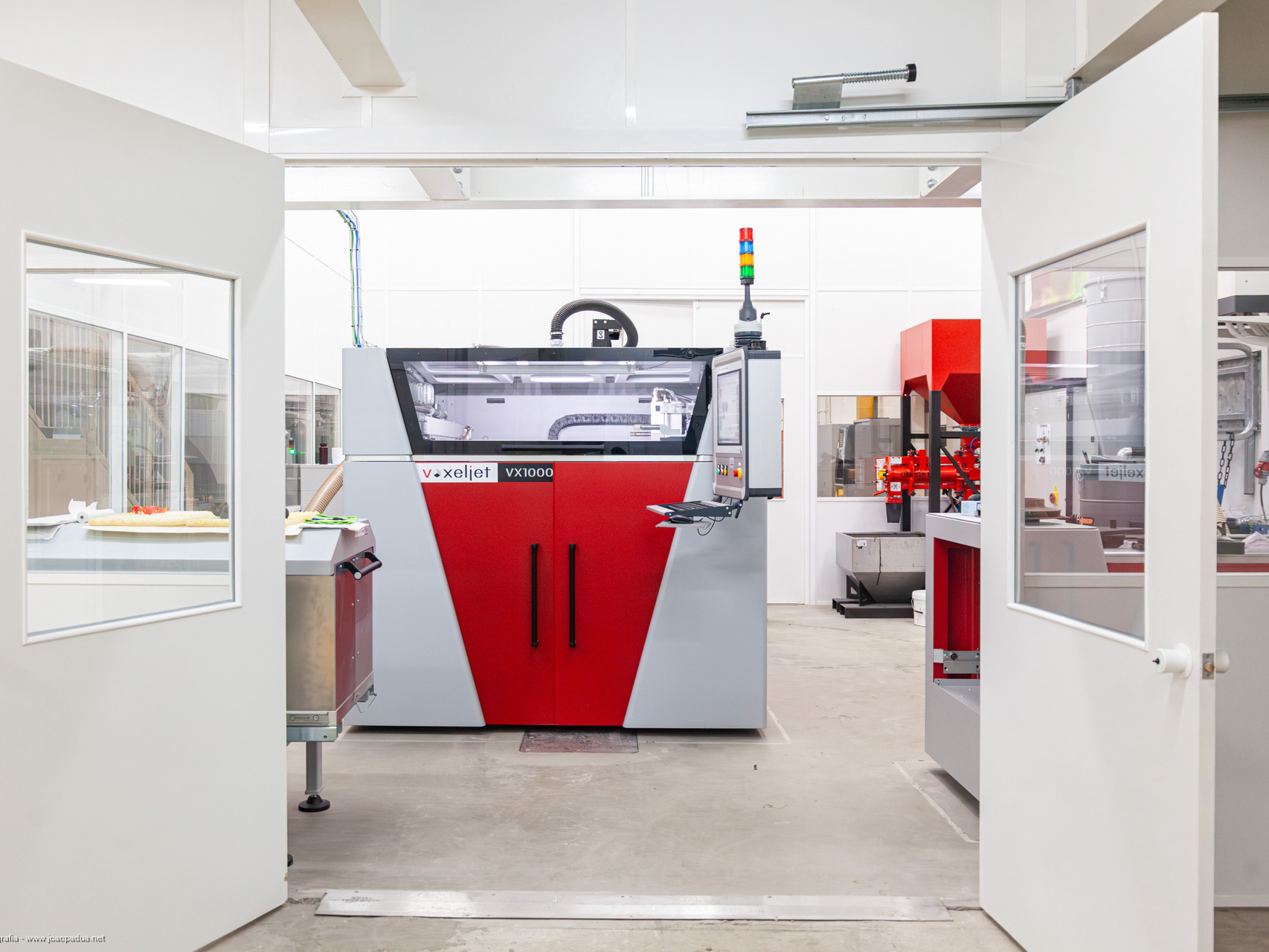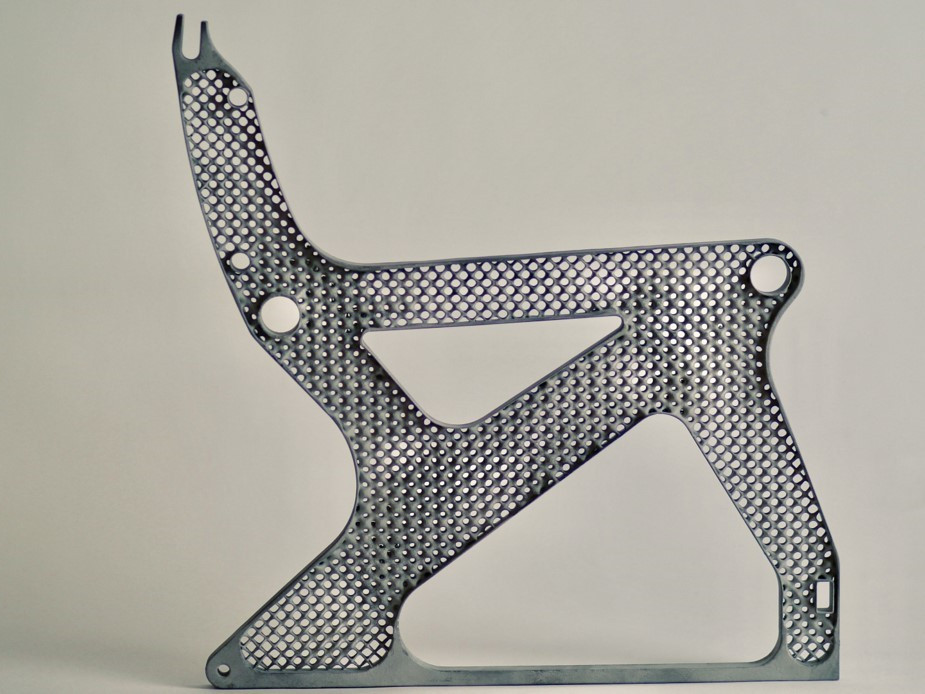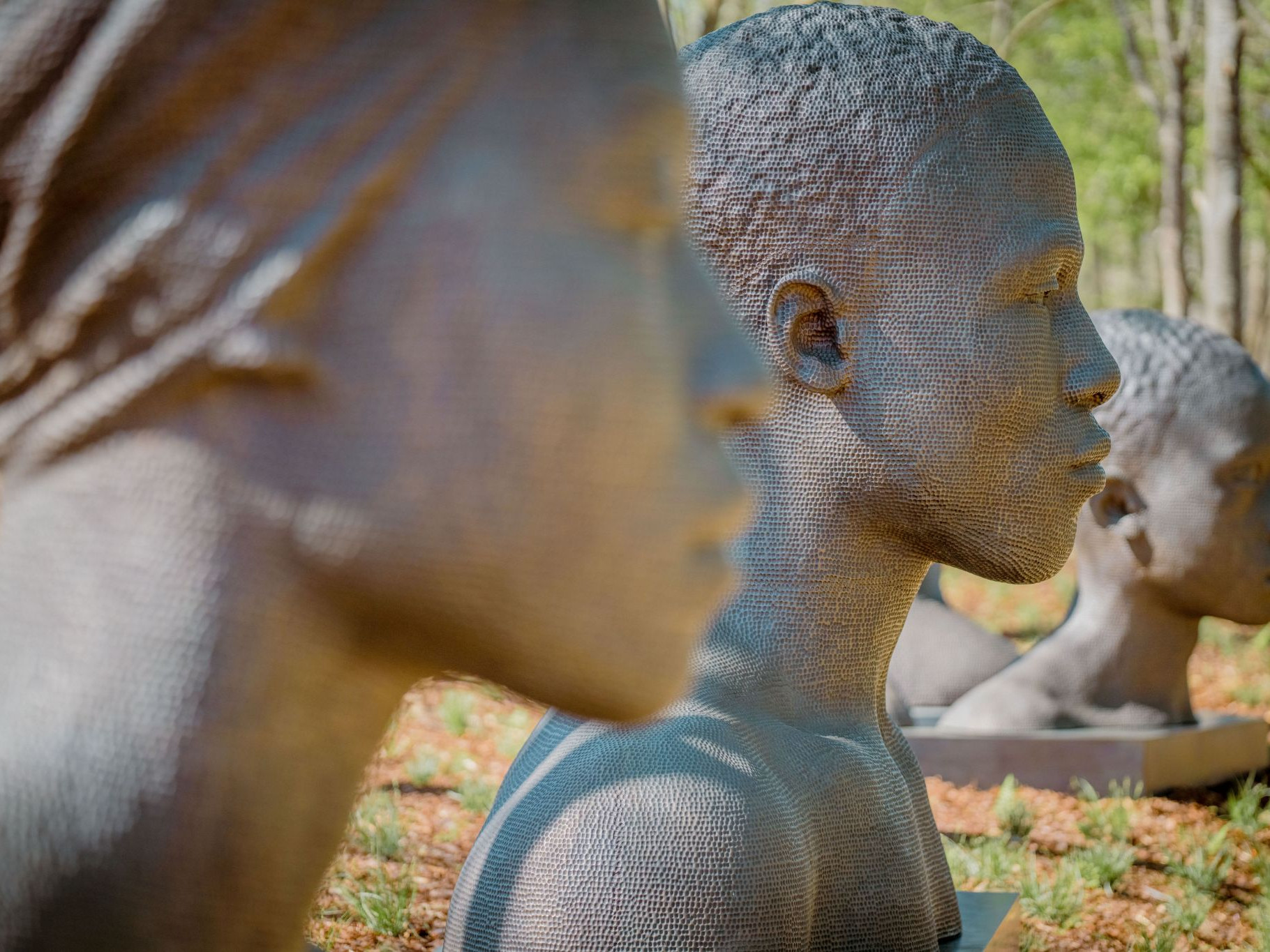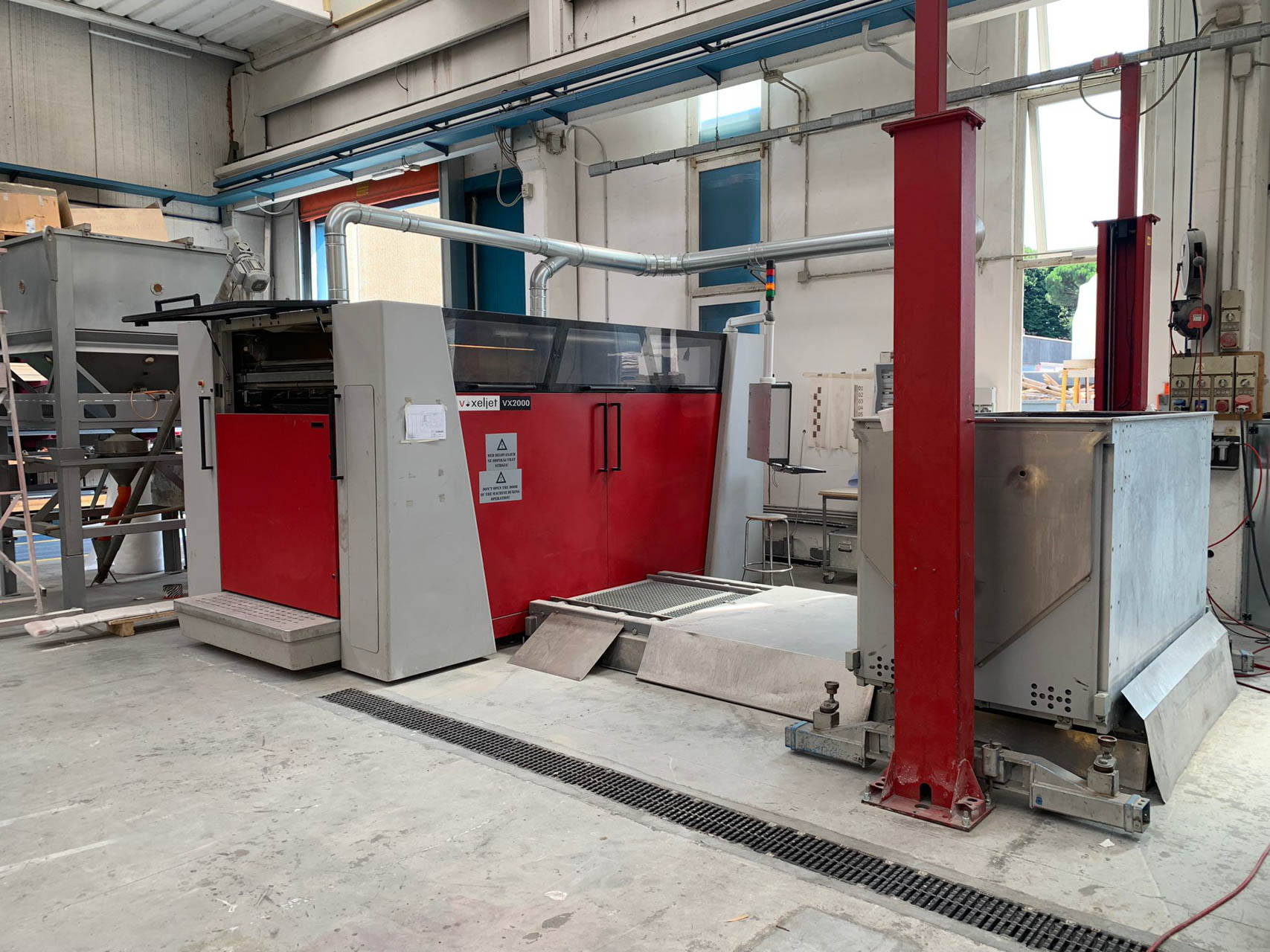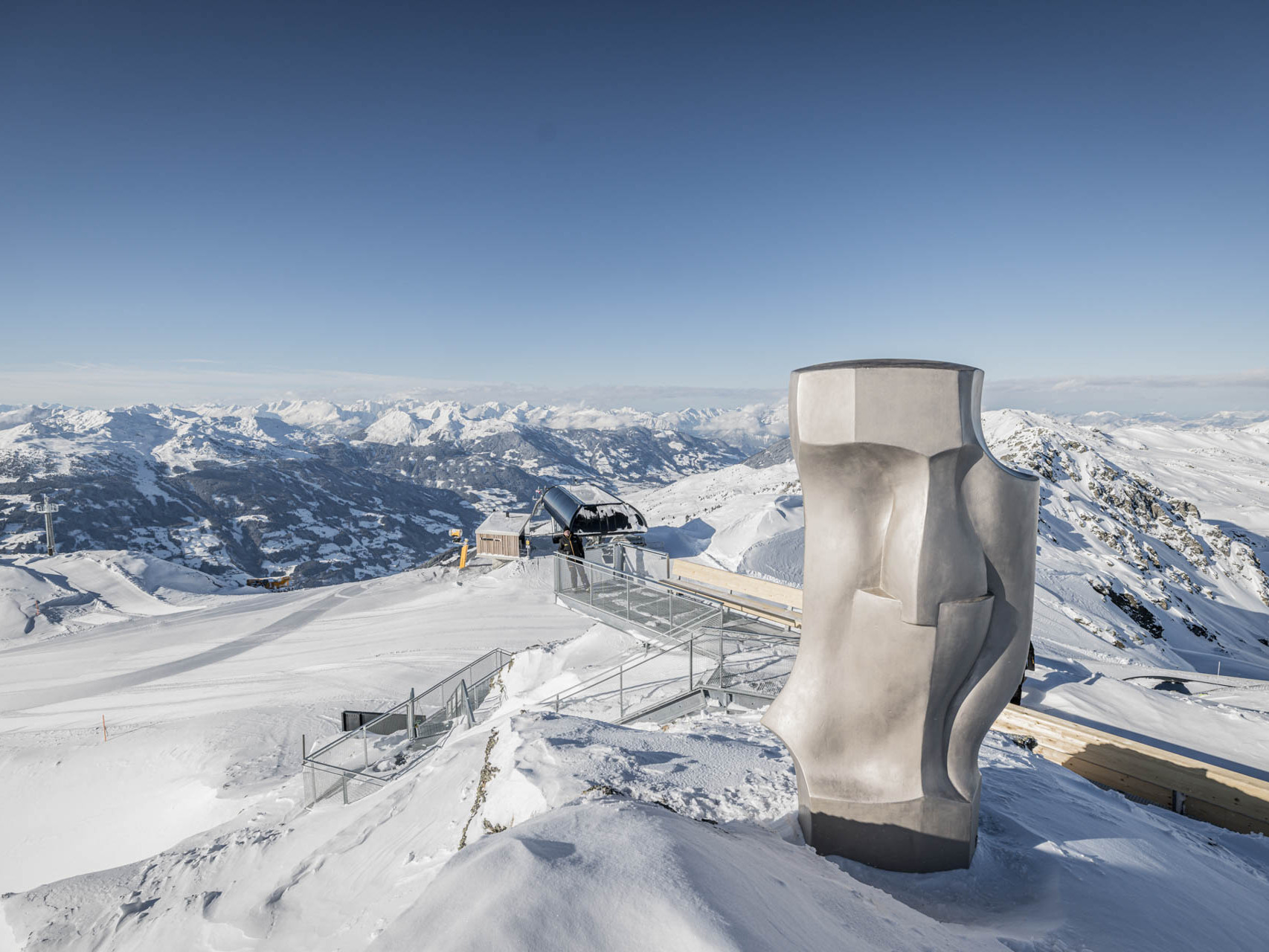- Home
- Case Studies
- Architecture
- 3D printing for sustainable architecture
3D printing for sustainable architecture: Zero-Wastage in construction, but perfectly shaped, fast and efficient
3D printing technologies make it easier for the construction industry to adapt to changing conditions. The AI-Table project stands as a true symbol. Rising raw material prices, fragile supply chains, growing time pressure and maximum environmental awareness:
The construction industry is being confronted with changing conditions on a wide variety of levels. Although the digitization of workflows is advancing in this industry, it has so far focused more on planning and administrative tasks than on end-to-end data-driven processes, from design to the actual structural element. Advanced 3D printing creates the necessary basis for future-oriented architectural projects.
At first glance, they are just a few table legs. The filigree, interwoven structures could be the work of a designer, inspired by observations made during a walk in the forest. To ensure that such fragile-looking structures do not collapse under the weight of a heavy tabletop, however, profound knowledge of the calculation of static loads is required in addition to artistic skill.
In fact, the idea behind these branching table legs is not just based on the creative mind of a human being, but also the AI functionality of Autodesk Fusion 360 software combined with powerful 3D printing technology and traditional metal casting. The idea was born in Singapore at the Architectural Intelligence Research Lab (AIRLAB), a design research laboratory from the Singapore University of Technology, where the idea of reliably absorbing the structural forces of the tabletop while using a minimum amount of material was discussed. The material of choice turned to bronze. Therefore, a positive pattern made of polymethyl methacrylate (short PMMA) was 3D printed, and the patterns were then transformed into cast parts by the renowned art foundry Strassacker, based in Germany. To cast the parts, the foundry molded the PMMA patterns into a ceramic shell that met the high-precision specifications. And as filigree as the end product may appear, in terms of stability these table legs are fully equal to a solid construction. The difference is made by a significantly reduced material input thanks to AI-assisted design and printed casting.
Filigree furniture design as a role model for 3D-printed building elements
Under the direction of architecture professors Carlos Bañón from Spain and Felix Raspall from Argentina, AIRLAB is dedicated to the question of how high-performance constructions can be realized with technological support and minimized use of raw materials. The focus is on digital design and manufacturing methods such as structural optimization and binder jetting 3D printing, with the help of which Bañón and Raspall want to firmly establish the idea of sustainability in the world of architecture. The table legs, which were created with the support of voxeljet, form a blueprint, so to speak, for a wide variety of design and construction projects of all types and sizes.
„3D printing offers us the opportunity to create real products from digitally optimized structures that would be difficult to manufacture conventionally."
Carlos Bañón, Co-Founder and Director - AIRLAB – Singapore
“3D printing gives us the opportunity to create real products from digitally optimized structures,” explains Carlos Bañón. “With conventional manufacturing processes, it would be impossible to create a real-world usable component based on the values generated by the software in terms of structural optimization, weight reduction and high performance. With advanced additive manufacturing technologies, on the other hand, this is easily achievable.” Felix Raspall adds, “In architecture, the design process traditionally starts with conceptual sketches and then leads to a highly technical project, culminating in the production phase. By incorporating algorithms into the design phase and 3D printing into manufacturing, we open up completely different creative dimensions with new levels of formal and material freedom.”
"3D printing brings sustainability to the world of architecture"
For architect and AIRLAB co-founder Carlos Bañón, one thing is certain: “Sustainability is the most urgent challenge of this century, and the construction industry plays a large and important role in this – simply because of its size and the lifespan of the products it generates.” Referring to printed casting as an alternative to conventional manufacturing processes, the researchers put the potential for reducing production-related energy consumption at between four and 21 percent, with the biggest effects coming from the significantly reduced need to transport raw materials. As if that wasn’t enough, Felix Raspall also sees 3D printing bringing unprecedented precision to the world of architecture: “3D printing is particularly popular in areas such as medical technology or aerospace where the highest precision at the level of fractions of a millimeter is required. In architecture, such accuracies have rarely mattered so far, but in the future, the results achievable in 3D printing could bring unimagined new designs.”
And now: think bigger!
The AI Table Project is a furniture project. And while the scale of the legs make them unsuitable for most direct metal printing technologies, the meaning and what the tables actually stand for can very well be scaled. More sustainability in architecture. „The AI Table has a functional design, capable to transfer the required loads. It’s a demonstration, that the design, optimization and manufacturing technologies can be put into creative action.“ explains Banon. „And looking at the current trends, such as the demographic change, we need creative actions to overcome the challenges of the future. At AIRLAB we look into digital technologies to achieve designs where the material use is reduced to the essential by implementing structural optimization. And looking at a whole building, there are a lot of opportunities to challenge the reign of the current paradigms of architecture.“
"In the future, the results achievable in 3D printing could bring unimagined new designs."
Felix Raspall, Co-Founder and Director - AIRLAB – Chile
For example, 3D printed elements have already proven their utility on various construction sites. In traditional buildings, almost 80% of the material used goes into ceiling constructions. By combining AI software, 3D sand printing and concrete casting, this material consumption could also be targeted very effectively. There’s a lot of room for improvement, and that’s exactly what Carlos Bañón and Felix Raspall are going for. Having already tried out a variety of 3D printing technologies in the course of their work, the two architecture professors first came into contact with the process developed by voxeljet for producing investment casting models for the AI table project. Now they are already working on their next project that has little to do with polished bronze, but rather with solid concrete casting.
More Case Studies
VX4000 expands foundry and business capabilities in water works
By installing a VX4000 3D printer into their new foundry, waterworks specialist Tyler Union not only reduces tooling costs drastically but also positions itself as a forward thinking industry leader.
3D printing for sand casting in Portugal
CINFU is a Portugal-based training and innovation centre for the foundry industry. With a VX1000 3D printer in house, CINFU is gaining significant adaptive advantages for the foundry industry.
Weight reduction through 3D printing: lightweight seats for the aircraft industry
Lightweight seats produced using 3D printing can reduce costs and emissions in the aircraft industry.
Bronze-cast sculptures produced with 3D printing
In the Freedom Monument Sculpture Park, there are three bronze sculptures by artist Shaleigha D'Clark, created using 3D printing
Lanulfi Models optimizes mold making with VX2000
The integration of voxeljet’s VX2000 has redefined Lanulfis approach to metal casting. It offers significant reductions in lead times and enhances design capabilities.
3D-printed sculptures at 2500 metres
At 2,500 metres in the Tyrolean Alps, these 3D-printed sculptures enjoy a special view. They are the fulfilment of a long-held dream of Tyrolean artist Magnus Pöhacker.
3d printed joysticks for tractors and machines
For Lindner Traktorenwerke, 3D printing is already an alternative to injection molding. For example, for customized joysticks and control elements for their tractors.
Industrial 3D Printing Systems
Our portfolio of industrial 3D printers ranges from compact systems for research to additive mass production.



















